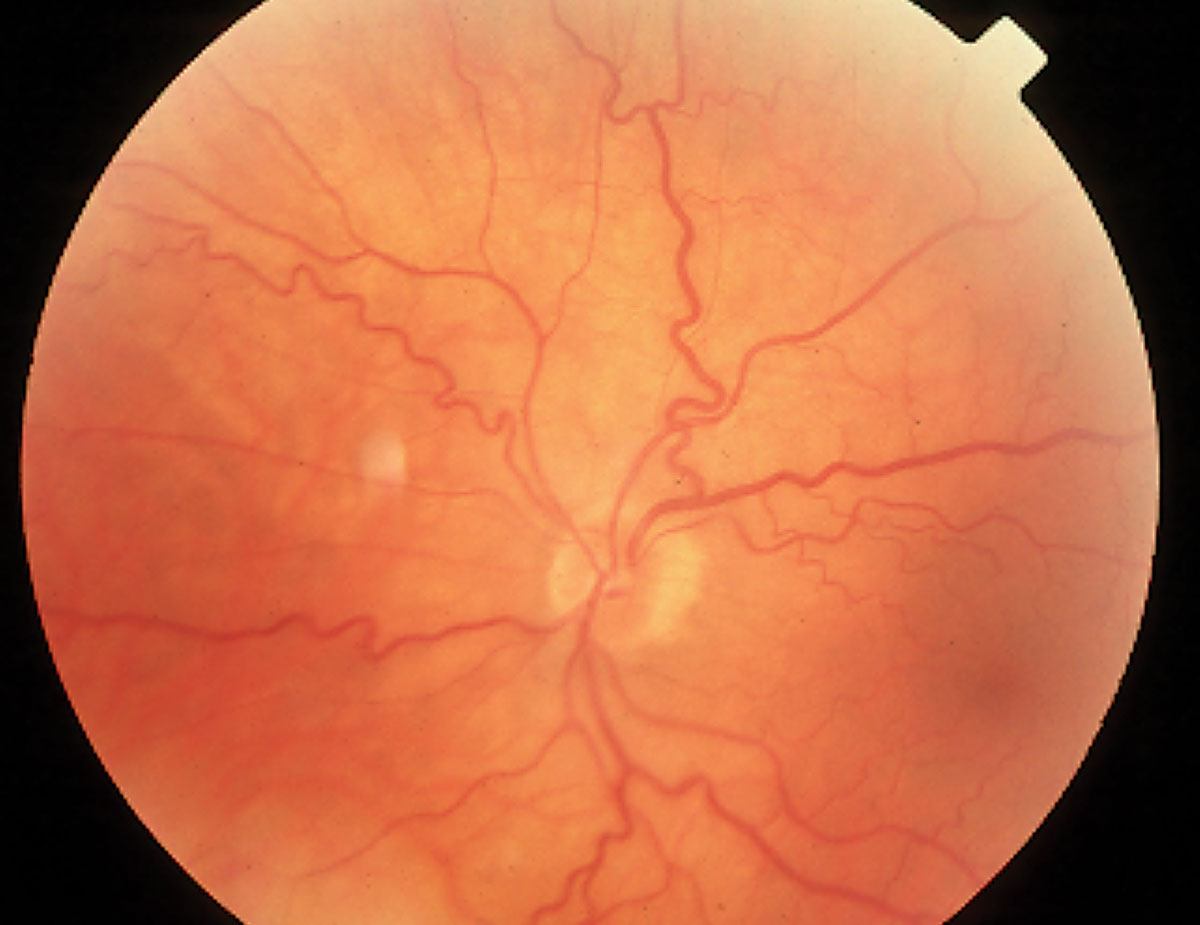 |
|
Several alleles associated with retinal vessel tortuosity suggest a common genetic architecture of this trait with cardiovascular diseases and metabolic syndrome. Photo: Leticia Rousso, OD, and Joseph Sowka, OD. Click image to enlarge. |
Recent research from Ophthalmology Science has identified novel genetic loci that may help better understand the molecular mechanisms both causing and modulating tortuosity of the retinal vasculature. Even further, this new study revealed causal relationships with other diseases and their risk factors.
The work itself, conducted in Lausanne, Switzerland, was a genome-wide association study (GWAS) of vascular tortuosity of retinal arteries and veins, replicated through meta-analysis and Mendelian randomization. Included was a total of 116,639 fundus images primarily from the UK Biobank dataset.
The researchers determined vessel type through using a deep learning algorithm and annotated vessels through use of a fully automated retina image processing pipeline. From there, median arterial, venous and combined vessel tortuosity was computed and was measured by the distance factor, defined as the length of a vessel segment over its chord length. Six other measures were included that integrated over vessel curvature. Finally, the GWAS was performed of these measured traits and assessed through gene set enrichment.
What they found was an association of higher retinal tortuosity levels to elevated instances of angina, myocardial infarction, stroke, deep vein thrombosis and hypertension. A total of 175 genetic loci were identified in in the Biobank to be associated, with 173 novel ones and four being replicated in the smaller meta-cohort. The GWAS revealed 114 loci for vessel type specific arteries and 63 for veins.
Heritability was estimated to be about 25%. The genes that showed significant association signals were shown to be overexpressed in both arteries and heart muscle, while also showing linkage with vascular structural property-related pathways.
The loci related to retinal tortuosity were determined by the researchers of this study as pleiotropic functions as cardiometabolic disease variants and risk factors. The pleiotropic effects of the loci were independently associated with coronary artery disease, myocardial infarction, hypertension, diabetes, chronic lymphocytic leukemia, Alzheimer’s, myopia and glaucoma. Related to this finding, the Mendelian randomization yielded causal effects of tortuosity with both BMI and LDL cholesterol levels. More specifically, elevated LDL levels causally were found to reduce arterial tortuosity. Conversely, a negative causal effect was seen of venous tortuosity on BMI, even though an established positive correlation already exists between BMI and retinal tortuosity. This might be due to other environmental factors influencing this relationship.
The researchers go on to report that their results are consistent with tortuosity-related genes being overexpressed in the aorta, tibial artery, coronary artery and heart tissues. The genes were specifically involved in development of blood vessels, vessel integrity maintenance and remodeling as a consequence of disease processes taking place.
By identifying specific loci associated with tortuosity, the study authors say, in their paper on the work, “our findings provide a significant process in understanding of molecular players and mechanisms modulating retinal vessel tortuosity, and their links to ocular and cardiometabolic diseases, which is fundamental for developing better tools for their diagnosis and treatment.”
Tomasoni M, Beyeler MJ, Vela SO, et al. Genome-Wide Association Studies of retinal vessel tortuosity identify numerous novel loci reveling genes and pathways associated with ocular and cardiometabolic diseases. Ophthalmol Sci. February 16, 2023. [Epub ahead of print]. |

